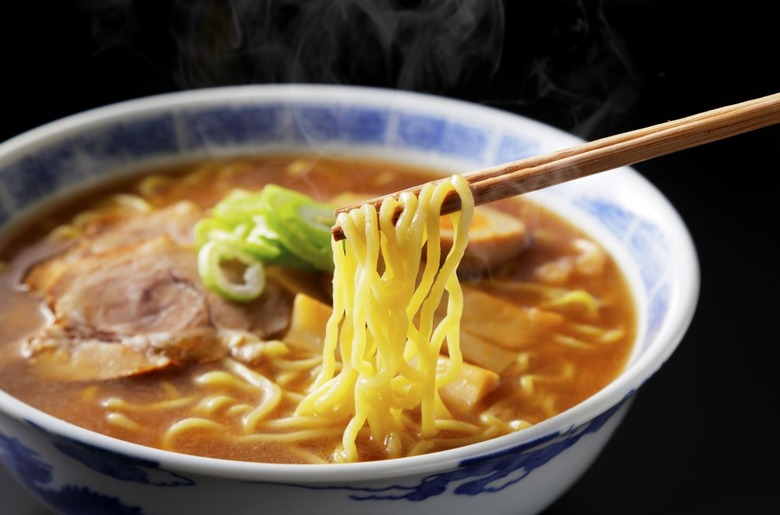Here's The Secret Ingredient That Makes Ramen Noodles So Good
If you've ever eaten ramen (either at a ramen shop or from a Styrofoam cup), you've probably noticed that there's just something... different about the noodles. They're yellowish, springy, slippery, have a slight chew, are firm but not exactly al dente, and don't get mushy even after a fair amount of time in the hot soup. So what's the reason behind this much-lauded texture? One word: kansui.
Ramen noodles have four primary ingredients: wheat flour, water, salt, and kansui. Kansui is basically mineral water that's slightly alkaline (the opposite of acidic), and it can trace its use in noodles back to the lakes of Inner Mongolia, which became legendary for this purpose hundreds of years ago. Today, it's made by adding sodium carbonate, potassium carbonate, and sometimes phosphoric acid to mineral water.
So how does kansui work its magic, exactly? Alkaline water interferes with the enzymes in the wheat flour and partially inhibits the development of gluten and lowers the acidity. This allows the noodles to be stretched slightly more easily, and it also imparts that unique texture. The color turns yellow because of the kansui's interaction with pigments in the wheat.
Alkalis like kansui, lye, and baking soda actually play a much larger role in food production than you may think. They give pretzels that dark brown shell, give corn tortillas that unique aroma and texture, are used in curing olives, and even give Oreo cookies their dark color and rich chocolatey flavor. For more details, check out this article by Harold McGee in the New York Times.
